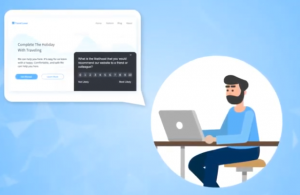“Over 95% of U.S. office workers” were forced “to become regular telecommuters practically overnight” this year, according to the U.S. Senate testimony of Global Workplace Analytics president Kate Lister.
While remote work continues to be a windfall for typically on-site workplaces to keep businesses operational and employees and communities safe amid global disasters and public health crises, remote work has been an employment staple for decades. Most recently, annual data from the U.S. Department of Labor’s Bureau of Labor Statistics shows that 23.7% of employed persons worked from home on an average day during 2019.
In addition to providing productivity solutions during crises, telework also reduces overhead costs for employers, facilitates scheduling flexibility for employees, and increases sustainability and positive environmental change by lessening the carbon footprints of enterprises and staff.
With an abundance of motivation to enable avenues for employees to work remotely, more on-site businesses will continue to incorporate telework into their employment models by creating new remote positions, transitioning on-site roles to home-based jobs, and offering flex-work arrangements to traditionally brick-and-mortar staff. If you are a business owner or manager who’s thinking about taking that leap, remember these six considerations before hiring your first remote employee:
1. Remote Position Expectations
Sound remote work arrangements are built on mutual trust and communication between employers, managers, and their employees. To thrive in a telework setting, all parties must exist on the same plane of understanding with regard to the expectations and responsibilities of the remote position. This information should be clearly conveyed at all levels of the hiring process, from the job description and interview to the contract signed by the new hire.
Additionally, employers, managers, and employees should understand how everyone will be held accountable for their responsibilities, as well as how success will be measured during the contract’s tenure.
2. Top Skills for a Remote Job
While remote job requirements will vary based on factors like the type of work involved, industry standards, company goals, and legal stipulations including job-specific licenses and certifications, telework positions also call for hirees to possess universal skills to succeed in a remote work environment. When hiring your first remote employee, look for applicants with these 10 valued skills:
- Self-management
- Communication (written and verbal)
- Technology confidence and troubleshooting
- Organization
- Cross-cultural awareness and respect
- Adaptability
- Reliability
- Teamwork
- Problem-solving
- Proactiveness
3. The Intangibles
The intangibles are a step beyond the education credentials, work experience, and hard and soft skills evidenced by a job applicant. Think of these qualities as an X-factor for a new hire or an instinct about a promising candidate. When vetting remote job applicants, look for these intangible traits to evaluate their fit for your business:
- Kindness
- Open-mindedness
- Ability to follow through and up
- Optimism
- Integrity
- Grit
- Resourcefulness
- Accountability
4. The Best Telework Experience Level for a New Hire
Employers and hiring managers need to evaluate the desired level of remote work experience for any remote position they fill. In most hiring scenarios, one of the following options will fit the business’s hiring needs:
- Start with a Freelancing Trial: Bringing on a potential employee for a probationary freelance contract provides green remote employers and managers with a grace period to adapt to distributed workflows and forge positive working relationships. At the end of the freelancing trial, and depending on the quality of the temporary arrangement, the contractor may receive an offer to sign-on for a permanent role.
- Hire an Experienced Remote Worker Immediately: Recruiting an experienced telecommuter as the first remote employee of a typically on-site company could alleviate some onboarding stress, especially when implementing a brand new work model. Hiring an employee with a history of working remotely provides the company with a first-level source of telework knowledge and advice. Employers and managers can consult with the employee on their own remote work experiences, discuss flex-work policies and plans they encountered with other employers, and use the success or failure of those other models to help shape new remote work strategies for their businesses.
5. Working Across Time Zones
The work and lifestyle flexibility afforded by remote work arrangements attracts a diverse talent pool from which employers can source the most qualified applicants for their available jobs. This boon, however, also brings to light an important consideration for hiring managers recruiting their first remote employees: working across time zones.
Remote collaboration and project management tools, like Zoom, Slack, Asana, Basecamp, DropBox, and Microsoft Teams, bridge gaps between time zones and keep workflows operational, but it is important for businesses to also practice the following remote work etiquette rules to ensure mutual respect and productivity in the virtual workplace:
- Establish equitable meeting times.
- Streamline the number of remote communication tools utilized so that asynchronous communication is functional.
- Set deadlines well in advance.
- Be mindful and of cultural differences and norms unique to employees.
6. Scheduling
In tandem with working across time zones, employers and hiring managers should consider scheduling rules and strategies when hiring their first remote employees. Most of these factors will be decided by the responsibilities of the remote job in question, as well as the business’s needs at a given time. For example, a company hiring a remote customer service representative may need that employee to work during a specific block of hours when customer service inquiries are most often submitted. Alternatively, a project-based work from home job, like graphic design, does not typically warrant a finite work schedule as long as deadlines are met by the employee.
Establishing scheduling requirements early on and including those expectations in a remote job posting will help companies attract the right candidates for their first remote positions.
Final Thoughts
Concerns for hiring a company’s first remote employee can be overshadowed by the enthusiasm for and numerous benefits of incorporating telework into a business plan. However, it is important for business leaders to address remote work nuances, like employee expectations, experience level, and scheduling, before the onboarding process begins.
Although no hiring experience is perfect—especially when implementing new workplace policies—taking these six things into consideration will create a more fluid recruiting and onboarding experience for employers, human resources personnel, managers, and remote job applicants. It could also be the first step in a company building its reputation as a remote-enabled business and expanding its remote work policies to include more distributed team members.
Business & Finance Articles on Business 2 Community(15)






